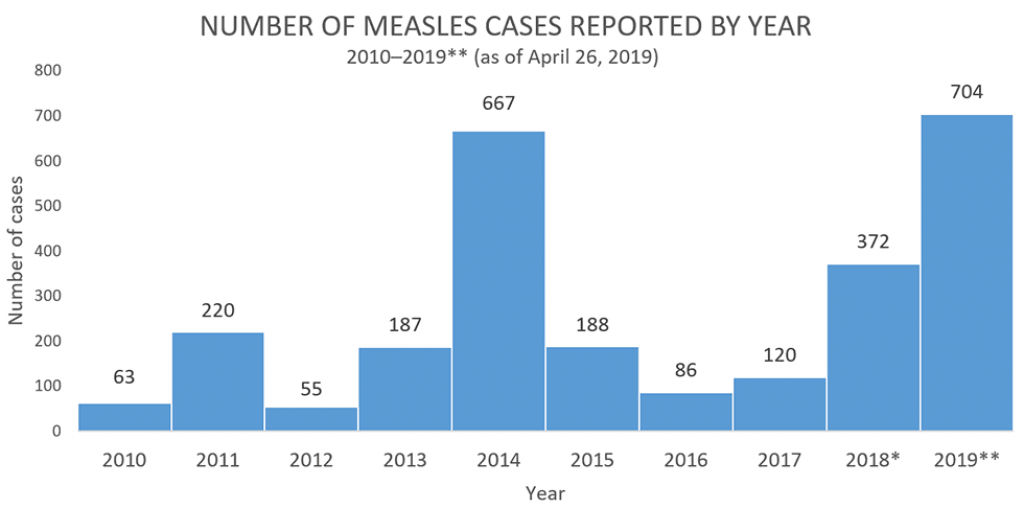
Public awareness of autism spectrum disorders (ASD) has risen markedly over recent years, in part due to the efforts of charities like AutismSpeaks. World Autism Month, in particular, has helped push forward a message of understanding and compassion.
Teachers and parents can be all too aware of the sensitive approach that children with Asperger’s require, but thankfully awareness among the wider population is also on the increase.
With so much more still to do, we decided to compile a list of some of the most important research findings around Asperger’s and autism spectrum disorders.
The selected studies have been broken down into their key findings. We’ve endeavored to include studies that have uncovered a new understanding of Asperger’s. Each of the studies covered in this article has been pivotal in changing our perspective on a common but often misunderstood disorder.
1. Asperger’s isn’t caused by vaccines
Discredited British doctor Andrew Wakefield caused a major stir in 1998 after publishing a paper in The Lancet that drew a controversial link between the MMR vaccine and autism.
Wakefield’s research led to an enduring public debate and a major backlash from the scientific community. Although most parents are aware that vaccinations are safe and essential, Wakefield and others have left behind a legacy of suspicion among some parents.
Indeed, vaccination rates appear to have fallen in the United States. Officials are concerned that anti-vaccination movements and growing apathy among parents may contribute to an increased disease outbreak.
CDC data shows that 704 cases of measles in the USA were reported in the first four months of 2019. This contrasts with the 86 cases reported in the entirety of 2016.

However, massive studies have emerged in more than two decades since Wakefield’s original research was published.
One of the biggest was completed in Denmark in 2019. The research team followed over half a million children born between 1999 and 2010. Ongoing follow-ups continued until 2013. The study concludes emphatically that the risk of developing autism is no greater for vaccinated children than unvaccinated children.
Source: Hviid et al. Measles, Mumps, Rubella Vaccination, and Autism: A Nationwide Cohort Study, Annals of Internal Medicine (1).
2. Prenatal and early life pesticide exposure may increase a child’s risk

Children exposed to pesticides in the womb and during infancy may be at a greater risk of developing an autism spectrum disorder.
Just under 3,000 children living in California’s Central Valley were followed by researchers in an attempt to understand the potential hazards of pesticide exposure. The Central Valley is the main agricultural powerhouse of the state. All of the children in the study resided in this area.
Children born to mothers living within 2km of pesticide-laden areas had a greater risk of subsequently developing an autism spectrum disorder than those children without such exposure.
Furthermore, the risk of developing an autism spectrum disorder (including Asperger’s) may increase as a result of exposure to common pesticides as an infant.
Source: von Ehrenstein Ondine S, Ling Chenxiao, Cui Xin, Cockburn Myles, Park Andrew S, Yu Fei et al. Prenatal and infant exposure to ambient pesticides and autism spectrum disorder in children: population based case-control study, BMJ (2).
3. Asperger’s can be harder to identify than autism
Although closely related, Asperger’s and autism present themselves differently. Unlike autistic children, those with Asperger’s very often have good language skills that develop at the same pace as their peers.
Most people with Asperger’s also want to socialize with others. On the other hand, autistic children very often appear uninterested in the people around them.
Another distinction between the two concerns cognitive skills. Some autistic children struggle with learning, but children with Asperger’s develop their cognitive abilities at a normal speed.
Because symptoms of Asperger’s can appear “milder” than those of autism, some children and even adults grow up without ever receiving a formal diagnosis. This may cause problems when affected individuals do not receive the help and the allowances that they need in order to thrive.
This reality was reflected in a study of children from Pennsylvania, in which the average age of diagnosis for Asperger’s was a full four years later than for autism. The difference may be even greater when the full scale of undiagnosed Asperger’s cases is factored in.
The finding is troubling because early diagnosis is important to ensure adequate help is provided to the affected child. In fact, the authors of the study themselves note the “critical” urgency of early diagnosis. This is because treatment interventions are more effective when begun early.
Source: David S. Mandell, ScD, Maytali M. Novak, MA, and Cynthia D. Zubritsky, Ph.D. Factors Associated With Age of Diagnosis Among Children With Autism Spectrum Disorders, Pediatrics (3).
4. Asperger’s isn’t caused by bad parenting

This common myth first found its way into the public consciousness in the mid-20th century. The “refrigerator mother hypothesis” theorized that emotionally distant mothers could cause autism spectrum disorders to develop in their children.
Although this idea was debunked long ago, a 2019 study brought new insight into the matter. Autism spectrum disorders appear to have both a genetic and an environmental component.
Difficulties for children with Asperger’s such as impaired social skills are not caused by bad parenting. However, parents do play a critical role in steering the course of a child’s development in other ways.
The researchers point out that sensitivity from parents to their children can help a great deal. Meanwhile, parents are a vital bridge between their child and effective early treatment. By engaging with therapy as a team, parents can even glean from professionals methods of helping their children that can be applied in day-to-day life.
Source: Judith A. Crowell, Jennifer Keluskar, Amanda Gorecki. Parenting behavior and the development of children with autism spectrum disorder, Comprehensive Psychiatry (4).
5. People with autism spectrum disorders may be more prone to depression
The fact that emotional and mental health problems occur frequently alongside Asperger’s won’t come as a surprise to many affected individuals and their families.
However, an interesting Swedish study from 2018 shed new light on the issue by studying over 200,000 young people in the Scandinavian nation’s capital city of Stockholm. Just over 4,000 of these individuals had a diagnosed autism spectrum disorder (ASD), of whom two-thirds were male.
By age 27, 19.8% of people with autism had been diagnosed with depression, compared to just 6% of all other young people in the study.
Interestingly, the risk of depression was higher among those with ASD without intellectual disability than those with ASD with intellectual disability.
It is well known that depression has a genetic element and can run in families. To counter this effect, researchers further examined differences in depression between siblings. Even then, young people with ASD were more than twice as likely to have received a depression diagnosis than their non-autistic brother or sister.
Source: Dheeraj Rai, MRCPsych, PhD; Hein Heuvelman, MSc, PhD; Christina Dalman, MD, PhD; et al. Association Between Autism Spectrum Disorders With or Without Intellectual Disability and Depression in Young Adulthood, Psychiatry (5).
6. Wearable technology like Google Glass may provide a useful tool in therapy
Many parents of children with Asperger’s are well aware of the struggle involved in getting a child into appropriate treatment. The hurdles are plentiful.
First, there is the challenge of receiving an accurate diagnosis. Assuming you’ve overcome this step then there may still be difficulties in trying to cajole your insurer into paying for treatment.
Even at this point, parents are often tested by long waiting lists for therapy and the inevitable problems posed by traveling to frequent appointments with a professional.
A group of researchers from Stanford University led a pilot study in 2018 that used an innovative software system running on Google’s “smart glasses” product.
14 families began using the prototype product at home and the progress of each child was monitored throughout.
The result? Children’s ASD severity decreased, performance on facial affect recognition tasks increased, and parent’s too reported improvements in eye contact and social behavior.
Although still only an experimental product, this study underlines the great potential of wearable technology in assisting individuals affected with Asperger’s or autism.
Source: Daniels et al. Exploratory study examining the at-home feasibility of a wearable tool for social-affective learning in children with autism, Nature (6).
7. Autism spectrum disorders may actually boost loyalty and focus

Autism and Asperger’s can cause great personal struggles, but not all of its characteristic signs are negative.
British researchers set out to explore the typical traits of the condition in adults and the ways in which they can confer benefits. A recurring theme they discovered was the ability of autistic individuals to focus intently on a task.
Described as “hyperfocus”, this behavior can allow individuals to mentally immerse themselves in an activity. Although perseverance may sound like a blessing, it can also lead to anxiety. People with ASD are also liable to becoming preoccupied with a specific task, leading them to miss the bigger picture.
Individuals with autism also appear to have a strong sense of loyalty. Indeed, having the condition may allow them to feel a greater sense of empathy, particularly for others with ASD.
A key message of this study is the need for greater nuance in discussing autism. Typical traits can be both positive or negative depending on the particular scenario and some may help in work situations and relationships. This way of thinking allows individuals and their families to take a more rounded and optimistic approach to the circumstances of their condition.
Source: Russell et al. Mapping the Autistic Advantage from the Accounts of Adults Diagnosed with Autism: A Qualitative Study, Autism in Adulthood (7).
8. Rational decision-making may be a strength of adults with an autism spectrum disorder
People with ASD may actually have certain decision-making strengths when compared with nonautistic individuals.
When researchers offered autistic and neurotypical people an initial choice between two products, then introduced a third inferior choice, those with ASD were less liable to change the decision they had made between the initial pair.
This consistency in choice can be interpreted as rational because the introduction of an inferior third option should not logically have any bearing on the first decision the person made.
Decision-making that is less swayed by contextual factors may be beneficial in certain professional or life situations.
Source: George D. Farmer, Simon Baron-Cohen, William J. Skylark. People With Autism Spectrum Conditions Make More Consistent Decisions, Psychological Science (8).
9. People with Asperger’s may be more perceptive of the non-social aspects of scenarios
In this study, scientists were able to correctly identify ASD in four out of five children simply by analyzing the way in which they focused their attention on social and non-social elements of pictures and videos. This was achieved by using a webcam and software.
Meanwhile, a separate team of researchers discovered that children with ASD have a tendency to look at the mouths of the people they’re speaking to when conversational topics are emotional in nature.
The avoidance of eye contact is a well-known characteristic of autism and Asperger’s but this study sheds new light on the way affected children use other available sources of social cues to help them process difficult conversational topics.
Source: Frazier et al. Development of an Objective Autism Risk Index Using Remote Eye Tracking. Hutchins, Brien. Conversational topic moderates social attention in autism spectrum disorder: Talking about emotions is like driving in a snowstorm (9, 10).
